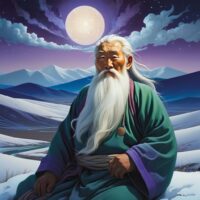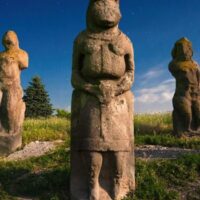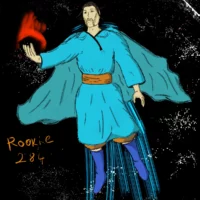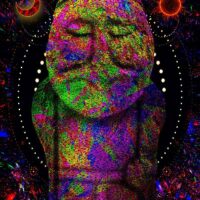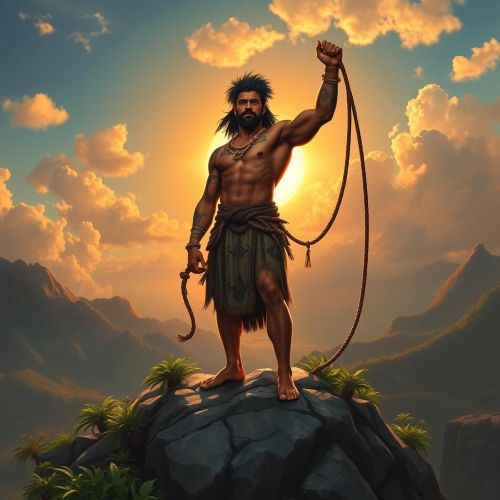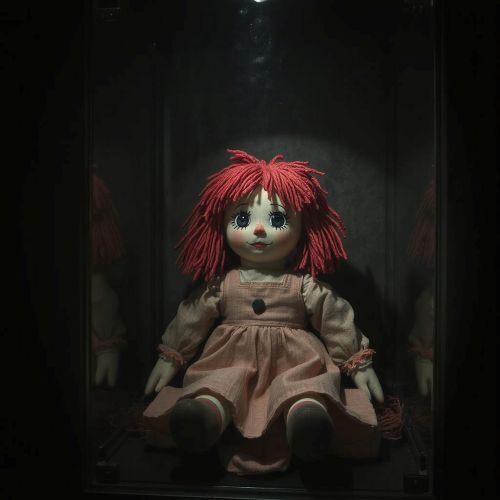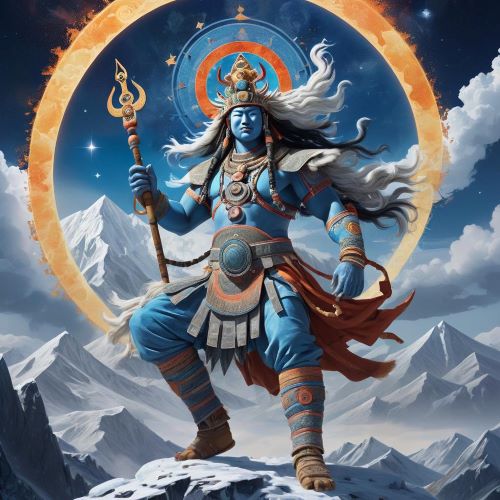Bai-Ulgan :The Creator God
Listen
At a glance
| Description | |
|---|---|
| Origin | Mongolian Mythology |
| Classification | Gods |
| Family Members | N/A |
| Region | Mongolia |
| Associated With | Creation |
Bai-Ulgan
Introduction
In the vast tapestry of Mongolian mythology, a benevolent figure reigns supreme: Bai-Ulgan (also known as Ülgen). He stands as a creator deity, shaping the world and imbuing it with life. Unlike the singular Sky God, Tengri, Bai-Ulgan embodies a more personal and active creator force, shaping the destinies of humans and the natural world. His name combines “bay” (meaning “rich”) and “ülgen” (meaning “magnificent”). Often distinct from Tengri but occasionally identified with him, Bai-Ulgan plays a crucial role in shaping the cosmos and human existence.
In the vast steppes of Mongolia, the rich tapestry of mythology and folklore is woven with tales of gods and spirits who govern the natural and supernatural worlds. Among these divine figures, Bai-Ulgan stands as a supreme deity, embodying the essence of creation, protection, and wisdom. Bai-Ulgan is a prominent figure in Mongolian shamanistic beliefs, symbolizing the intricate relationship between the heavens, the earth, and humanity. His stories reflect the values, fears, and aspirations of the Mongolian people, making him a central figure in their cultural and spiritual landscape.
Physical Traits
Bai-Ulgan, a supreme deity in Mongolian mythology, is depicted with a majestic and imposing presence, signifying his divine status. Typically portrayed as a grand figure in resplendent attire, his physical appearance exudes authority and benevolence, with awe-inspiring yet comforting features. Bai-Ulgan’s long, flowing beard symbolizes wisdom and age, while his penetrating eyes are capable of seeing into the hearts of men and the depths of the cosmos. He is often shown holding a staff or scepter, emphasizing his role as ruler and protector of both natural and spiritual realms.
Bai-Ulgan resides on the sixteenth floor of the sky, above the stars, sun, and moon, in a golden house inaccessible to mere mortals. Only shamans and kams with astral powers can reach him, and animals, particularly horses, are sacrificed in his worship. His depictions are scarce, leaving room for interpretation. Some legends portray him as a being of pure, ethereal light, radiating warmth and wisdom, while others describe him as a majestic figure with a flowing white beard, symbolizing his age and experience. He may reside in a celestial palace, reflecting his divine authority. The lack of a concrete form emphasizes his omnipresence, existing beyond the limitations of the physical world.
Family
Bai-Ulgan’s family structure varies among Mongolian tribes and their oral traditions, but he is consistently portrayed as part of a divine lineage. In some accounts, he is considered the son of Tengri, the supreme god, and is often depicted alongside his consort, Esege Malan. Together, they are credited with creating the earth, sky, and all living beings. Bai-Ulgan’s divine status is emphasized by his emergence from Kayra (Tengere Kayra Khan), placing him as a preeminent deity next to Tengri.
Bai-Ulgan is described as having seven sons, known as the Ak oğlanlar (White Boys) or Kıyatlar, each with specific roles. These sons include Karshyt Khagan, the god of purity; Bura Khagan, the god of horses; Burcha Khagan, the god of prosperity; Yashyl Khagan, the god of nature; Karakush Khagan, the god of birds; Kanym Khagan, the god of confidence; and Bakhty Khagan, the god of blessing. Each son contributes to the divine order and the management of different aspects of the world.
In addition to his sons, Bai-Ulgan has nine daughters, known as Akkızlar or Kıyanlar, though their names are largely unknown. Bai-Ulgan’s familial connections are crucial for understanding his role in Mongolian mythology. His most notable child, Erlik Khan, the god of death and the underworld, represents a duality within the pantheon. The relationship between Bai-Ulgan and Erlik Khan reflects the balance between creation and destruction, life and death, underscoring the interconnectedness of these elements in Mongolian belief systems.
Other names
Bai-Ulgan is known by various names and titles across different Mongolian regions and tribes, each reflecting his attributes and roles within the mythology. One prominent title is “Ulgen Khan,” meaning “King Ulgen,” which emphasizes his status as a supreme ruler among the gods. Another title, “Bai-Ulgan Tengri,” incorporates “Tengri,” meaning “sky” or “heaven,” to highlight his celestial connection. These titles illustrate the diverse aspects of Bai-Ulgan’s character and his importance in Mongolian spiritual life.
Different tribes offer unique names for Bai-Ulgan based on their interpretations. Among the Altai people, he is called Kayra Khan, denoting his role as the ruler of the universe. The Yakuts of Siberia refer to him as “The White God” or “The White Master Creator,” emphasizing his benevolent and creative nature. These names reflect how Bai-Ulgan’s attributes are perceived in various cultural contexts.
Bai-Ulgan is sometimes equated with Tengri, the overarching sky god in Central Asian cultures. This association underscores his complex identity, combining elements of divine governance and abundance. The varied names and titles he holds across different tribes highlight the multifaceted nature of this deity, encompassing both his creative and governing roles within the cosmos.
Powers and Abilities
Bai-Ulgan wields a vast array of powers that establish him as a central figure in Mongolian mythology. As a creator deity, he is credited with breathing life into the barren earth, forming mountains, rivers, and fertile plains essential for nomadic life. His mastery over natural elements is reflected in his control of rain, thunder, and lightning, as well as his role in crafting the stars and celestial bodies that light up the night sky.
In addition to shaping the physical world, Bai-Ulgan governs the destinies of humans and animals. He is believed to have created humanity, endowing individuals with distinct skills and purposes. Legends also depict him as a moral arbiter who rewards virtue and punishes vice. His influence extends to shamans, whom he empowers to heal, communicate with spirits, and serve as intermediaries between the earthly and celestial realms.
Bai-Ulgan’s role as a protector is evident in his safeguarding of humanity from Erlik, the god of evil and darkness. He is revered as a source of wisdom and justice, frequently called upon in ethical and moral matters. His command over natural elements, such as weather and land fertility, underscores the deep connection between the Mongolian people and their environment, emphasizing the significance of harmony and balance in their spiritual worldview.
Modern Day Influence
Despite the sweeping changes brought by modernization and globalization, Bai-Ulgan’s legacy remains vibrant in contemporary Mongolian culture. Traditional practices continue to honor him through shamanistic rituals and ceremonies, where his blessings are sought for health, prosperity, and protection. These rituals highlight the enduring spiritual significance of Bai-Ulgan, particularly in rural communities where ancient customs are still practiced.
Bai-Ulgan’s influence also permeates Mongolian arts and literature. His stories and attributes are preserved in folklore and epic poetry, ensuring that his legacy endures across generations. These narratives not only keep his memory alive but also maintain a cultural connection between past and present. His imagery and stories serve as a cultural repository, enriching modern Mongolian identity with historical depth.
Moreover, Bai-Ulgan’s symbolism extends into contemporary environmental and cultural movements. As a deity associated with creation and nature, his image is invoked in discussions about ecological preservation and sustainable practices. This reflects a continuing respect for the natural world, echoing traditional values. The concept of a benevolent creator deity informing moral conduct remains relevant, with Bai-Ulgan’s tales serving as a foundation for ethical values and a reminder of humanity’s cosmic connection.
Related Images
Frequently Asked Questions
What is lorem Ipsum?
I am text block. Click edit button to change this text. Lorem ipsum dolor sit amet, consectetur adipiscing elit. Ut elit tellus, luctus nec ullamcorper mattis, pulvinar dapibus leo.
What is lorem Ipsum?
I am text block. Click edit button to change this text. Lorem ipsum dolor sit amet, consectetur adipiscing elit. Ut elit tellus, luctus nec ullamcorper mattis, pulvinar dapibus leo.
What is lorem Ipsum?
I am text block. Click edit button to change this text. Lorem ipsum dolor sit amet, consectetur adipiscing elit. Ut elit tellus, luctus nec ullamcorper mattis, pulvinar dapibus leo.
What is lorem Ipsum?
I am text block. Click edit button to change this text. Lorem ipsum dolor sit amet, consectetur adipiscing elit. Ut elit tellus, luctus nec ullamcorper mattis, pulvinar dapibus leo.
What is lorem Ipsum?
I am text block. Click edit button to change this text. Lorem ipsum dolor sit amet, consectetur adipiscing elit. Ut elit tellus, luctus nec ullamcorper mattis, pulvinar dapibus leo.

